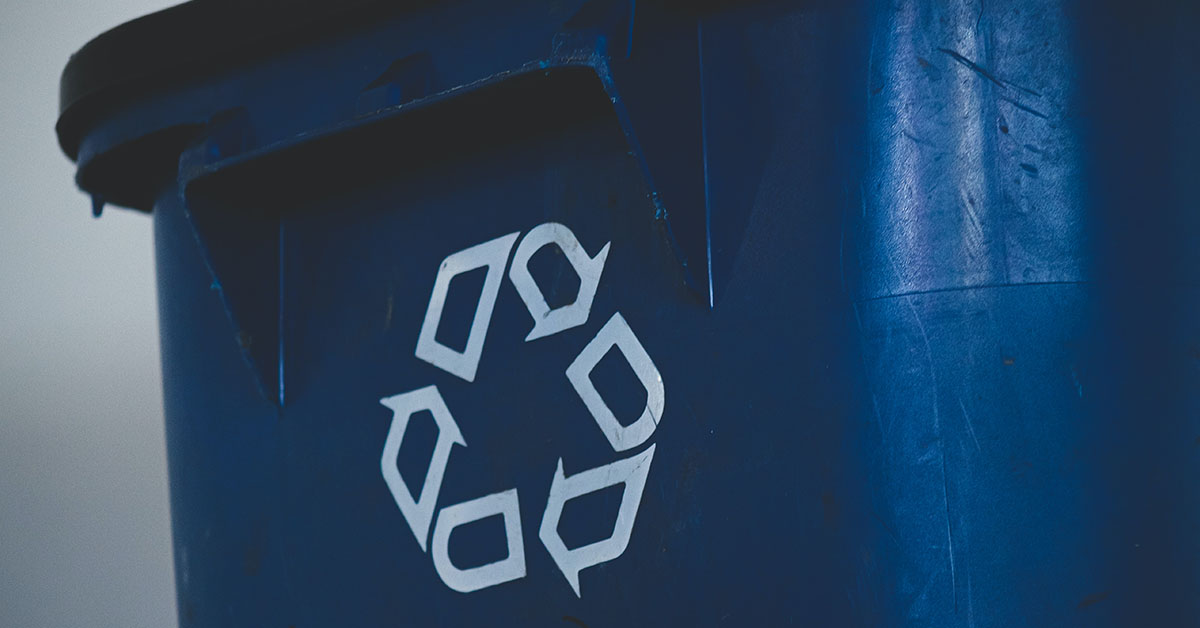Plastic waste is at crisis levels. The “chasing arrows” logo may be part of the problem.
Few brand images are as readily understood as the universal recycling symbol. No need for words: Wherever you see the Escheresque “chasing arrows” logo—on a beverage bottle, pasta box or toy store blister pack—the message is clear: Recycle this and save the planet.
Except … no. For one thing, it’s not actually a brand. The logo, created in 1970 by USC student Gary Anderson, was the winning entry in a contest held by a corrugated cardboard company to raise environmental awareness around the time of the first Earth Day. Anderson pocketed the $2,500 prize and went on with his life, and the symbol, he told The New York Times, “took on a life of its own.”[1]
Because the design has never been registered or trademarked, individuals and companies have always been free to use, adapt and modify it to their hearts’ desire. It has no official standing and it often appears on things that aren’t easily recycled.
In fact, less than 6% of all plastic used in the U.S. is recycled.[2] While we dutifully haul our used bottles and take-out trays to the recycling center, most plastics ultimately wind up in landfills, incinerators or the world’s oceans, but not before gumming up the recycling works and leading to more waste, not less.
So the Environmental Protection Agency recently petitioned the Federal Trade Commission to scrap the chasing arrows icon on plastics altogether and replace it with a stylized triangle that consumers wouldn’t automatically misinterpret as a badge of recyclability. “When products aren’t recycled right or aren’t recycled at all, the cost for consumers and communities is high,” the EPA wrote in its appeal to the FTC. And the graphic implication that all plastics are recyclable “is deceptive or misleading.”[3]
As creative agencies like Carpenter Group know, when a registered trademark or brand is poached, serious consequences can ensue, typically in the form of bad press, lawsuits, injunctions and other headaches. But there is no mechanism for protecting public domain marks like the “chasing arrows.” No one owns them, anyone can use them. And yet their abuse can unleash torrents of misinformation.
Consider the disembodied eye that sits atop the pyramid on the reverse side of the dollar bill. Known variously as “the Eye of Providence” and “the All-Seeing Eye,” its somewhat creepy vibe belies its origins in 1776 as a symbol of divine providence and benevolence.[4] But that hasn’t stopped conspiracy-mongers from associating it with nefarious schemes to take over the world by a long list of evil actors.
Likewise, the chasing arrows motif is a example of good symbols used for harm, suggests the EPA. Created in the spirit of saving the planet, it has done anything but.
[1] https://www.nytimes.com/2023/08/07/climate/chasing-arrows-recycling-symbol-epa.html?searchResultPosition=1
[2] https://www.wbur.org/hereandnow/2022/11/02/plastics-recycling-report#
[4] https://www.bbc.com/culture/article/20201112-the-eye-of-providence-the-symbol-with-a-secret-meaning




